-
Home
- The "Best Ever" Dinner Party!
- Structuring the Evening
- Rafting Food
- Diane & Jerry's Socially Distanced Thanksgiving
- A Gregory Virtual Food Event
- GAND Virtual Event
- The Joy of Meals with Friends
- Cooking for Two >
- Expeimenting with new recipes
- Fat Tuscan - Cooking Class
- A New Style Church Dinner
- Camp Cooking
- Sushi Feast
- The Young Cook >
-
Menus
-
Recipes
-
Salads
>
- Cabbage Salad with Peanut Sauce
- Fennel and Orange Salad
- Quinoa Avocado Salad
- Caramelized Shallot Salad
- Green Waldorf Salad
- Immunity Salad
- Beet, Apple, and Walnut Salad
- Green Salad with Roasted Pears and Blue Cheese
- Salad with Greens and Stawberries
- Warm Spinach Salad
- Hurricane Salade Niçoise
- Saautéed Spinach with Almonds & Raisins
- Tossed Salad with Marinated Apple Slices
- Citrus Avocado Lettuce Salad
-
Vegetables & Legumes
>
- Tadka dhal
- Roasted Potatoes, Beans, and Mustard Dressing
- Cauliflower, Chickpeas, Curry, and Quinoa
- Curried Lentil Stew & Sweet Potatoes
- Black beans and Corn
- Brandied Winter Squash
- Roasted Beets with Goat Cheese
- Cuban Black Beans
- Asian Broccoli Salad with Peanut sauce
- Stuffed Zucchini
- Balsamic Root Vegetables
- Chickpea and Potato Stew
- Aloo Gobi Marsala
- Curried lentils with Chicken
- Brussels Sprouts
- Spinach, Mushrooms, and Red Peppers
- Pea Pesto
- Kimchi Udon Noodle Stir-Fry
- Eggplant Parmesan
- Baba Ganoush
- Pasta Primavera
- Three Bean Chili
- .Flavorful Cauliflower
- Cauliflower Appetizers
- Garlic Parmesan Roasted Carrots
- Caponata
- Creamed Corn
- Braised Cabbage with Apples & Pecans
- Sautéed Rainbow Chard
-
Grains & Potatoes
>
- Polenta Fries
- Risotto with Peas
- Risotto with Mushrooms & Gruyere
- The Best Sweet Potaoto Wedges
- Yellow Dal Fry
- Sweet Potato Salad
- Laura's Granola
- Sweet Potato & Black Bean Burrito
- Rice Pulao
- Roasted Turnips
- Farro Corn Salad
- Creamy Carrot Farrotto
- Quinoa Chickpea Salad
- Quinoa Salad
- Baked Pasta & Cottage cheese
- Lentil Salad
- Quinoa Primavera
- Pesto Bruschetta
- Les Trois Pommes
- Fruit and Nut Tabouli
- Polenta
- Fruit and Nut Tabouli
- Buckwheat with onions & mushrooms
- Tofu & Eggs >
-
Soup
>
- Chicken Soup
- Potato and White Bean Puttanesca Soup
- Squash & Mushroom Soup
- Parsnip Soup with Walnut Pesto
- Turkish Lentil Soup
- Roasted Mushroom Soup
- Corn Chowder
- Miso Soup
- Blue Zones Longevity Soup
- Lemony Shrimp & Bean Soup
- Turnip Soup
- Turkey Mushroom Rice Soup
- Pear & Carrot Soup
- Broccoli & Squash Soup
- Lentil Soup
- Hearty Vegetable Soup
- Onion Soup
- Squash Mushroom Soup
- Pea Soup
- Herby White Gazpacho
- Formaggio's Avocado Soup
- Avocado Soup - Warm
- Avocado Cucumber Soup
-
Seafood
>
- Shrimp & Tomatoes
- Shrimp with Feta and Orzo
- Sesame Stir-Fry Shrimp and Spinach
- Shrimp, tomatoes, and feta
- Flavorful Shrimp
- Scallop, Shrimp Risotto
- Scallops with mushrooms & tomatoes
- Paella
- Fish with Pesto
- Baked Canned Sardines with Potatoes
- Salmon en Papillote
- Fish with Lemon Garlic Sauce
- Pecan Crunch Salmon
- Pasta alla Puttanesca
- Willow's Tuna Cakes
- Baked Fish with Ripe Olives and Feta
- Baked Fish with Garlic & Aleppo Pepper
- Almond Lemon Crusted Tilapia
- A Great Lobster Roll
- Meat >
-
Chicken & Turkey
>
- Chicken Marsala
- Orange-Raisin Chicken with Toasted Cashews
- Crispy Chicken Parmesan
- Chicken Veronique
- Chicken, Apricots, Sweet Potatoes, & Prunes
- Hurricane Chicken Salad
- Aleppo Pepper Glazed Chicken
- Grapefruit Chicken with Roasted Vegetables
- Chicken with Goat Cheese
- Chicken Saltimbocca
- Penney's Chicken
- Chicken Stir-fry
- Moroccan Turkey Stew
- Sweet Potato, Turkey, & Peanut Stew
- Turkey Chili with Beer
- Chickpeas with Ground Turkey
-
Sweets & Breads
>
- Baked Alaska
- Banana Strawberry Frozen Dessert
- Tiramisu
- Sally's Strawberry Pie
- Sun-Dried Tomato Cheese Bread
- Ryan's Cranberry Sauce
- Cranberry orange relish
- Roasted Cranberry and Goat Cheese
- Chocolate Prune Cake
- Pear & Custard Dessert
- Chocolate Yogurt Pavlova
- Chocolate-Cherry Oatmeal Cookies
- Peach and Blueberry Crisp
- Banana-Walnut Souffle >
- Clafouti
- Powerful Bran Muffins
- Easy Graham Crust Cheesecake
- Almond Cookies
- Pineapple Coconut Crumble
- Orange Walnut Torte
- Cottage Cheese Pancakes
- Nuts - 2 Ways
- Stollen
- Creamy Brandied Cherries
- Chocolate Avocado Pudding
- Upside Down Apple Bacon Pancake
- Peanut Butter, Chocolate, & Cherries Protein Bars
- Roasted Chickpeas
- Pears with Raspberry Sauce
- Cherry Pistachio Topping
- Easy Peanut Butter Cookies
- Thumbprint Cookies
- Doughnuts with Chocolate Glaze
- Whole-Grain Blueberry Cornbread
- Flan - Traditional Cuban Custard
- Chocolate, Almond, Olive Oil Cake
- Pumpkin Souffle
- DOUBLE CHOCOLATE SOUFFLE
- Nutty Brownies
- Boozy Strawberries
- Snack Bars with Almonds, Oats, & Pretzels
- Chickpea Blondies
-
Salads
>
-
Your Ideas
- Blue Poo Muffins
- Kosher Foods
- Ashima's Tasty Cuisine
- Jessica's Garden >
- Debra's Salmon "En Papilote"
- Renee's Plant-Based Cooking
- Maureen & the Air Fryer >
- Becky's Creative Dishes
- Ohan's Perfect Steak
- Jennifer's Dishes
- Myra's Recipes >
- Ron's Sweet Potato
- Sallie's Quinoa Salad
- Ezra, the cook
- Ezra Shrimp Bahn Mi
- Ron & Brenda's Puttanesca on Coucous >
- Julie's Crunchy Cheese Snack
- Turkish Eggplant and Beef
- Fred's Bread
- Klaus & Giselas birthday meal >
- Gainesville Free Grocery Store
|
At the end of the 2019 Alzheimer's meetings researchers concluded lifestyle factors were the only bet for preventing dementia risk, since their drug studies had failed. Diet was one of the prominent lifestyle factors and the MIND DIET or dietary pattern was shown in a 936 person study to help prevent dementia risk. Two exciting findings in the research of this diet was that (1) though total adherence to the pattern showed the best benefit, partial adherence showed partial benefit and (2) this pattern was particularly beneficial for those at genetic risk.
Subscribe to my newsletter on the Home Page for current nutritional information and great recipes.
0 Comments
Parsnips are the neglected cousin of the carrot and with much more Vitamin C and they are in season now. Their gentle sweet flavor blends with lots of meat and vegetable dishes, but they are lovely by themselves. Below is a terrific parsnip soup with a little walnut parsley pesto to complement the sweetness. It's easy to make and a great soup to serve. Just click on the soup for the recipe.
What should you know about this amazing fruit? Here is a site about 10 varieties of pears grown in the USA. This is a great time to become a connoisseur of the beautiful fruits of the season and find your favorite. Unfortunately, most of the pears are grown in Washington and Oregon and after the fires they've had this year, they may be harder to find. The three types in my picture above were available in my local supermarket. From left to right they are Bartlett, StarKrimson, and Bosc. Each has a unique taste and texture.
Usually when you buy pears from the grocery store they are not fully ripe and should not be refrigerated right away. Don't squeeze the body of fruit to check if it's ripe. Instead, gently press on its neck which should yield a little when it is ready to give you its best flavor. Pears are included on the site of the World's Healthiest Foods. Pears are a wonderful ingredient from meat dishes to salads or desserts. Here are some pear recipes on this website; Roasted Pear and Blue Cheese Salad, Pear Custard Dessert, and Carrot and Pear Soup. AND don't overlook that the pear, all by itself, is a wonderful snack. This fairly mild green plant has amazing versatility. Raw spinach is the basis of many wonderful cold salads. Spinach is also included in many cooked meals, from breakfast dishes with eggs to a variety of wonderful dinner recipes where it blends well with an array of flavors and foods. Fresh spinach, quickly sautéd with olive oil and garlic, is a classic Italian dish and is seen as an appetizer in some Italian restaurants. Spinach provides an astonishing amount of nutrients, including phytonutrients, water-soluble vitamins, and fat-soluble vitamins. Some of these nutrients are more available to us when eaten raw and some when eaten cooked. So should you eat it raw or cooked? Look at this great Vegetarian Times article, Nutrition Face-Off: Raw vs. Cooked Spinach. My husband and I like our spinach just sautéd lightly in olive oil and garlic. Watch here for a very impromptu spinach sauté. Click on the picture below for a great vegetable dish whether you sauté the vegetables or not.
I know it seems that that the nutrition community just can't get it right. One day the headlines say eggs are one of the most nutritious foods you can eat and the next day the headlines claim that eating eggs will result in an early death. Actually, the headlines blow up a small piece of the puzzle and miss the big picture. There is no doubt that the egg is a marvelous nutrition package. It has 6 grams of protein with all essential amino acids in the perfect ratio for our body to use. It also has 13 essential vitamins and minerals. So why would this nutritious food be maligned?
Well, the problem is the cholesterol. This is what keeps the headlines going back and forth. The Dietary Guidelines from the USDA and American Heart Association had previously recommended limits of 300 mg of cholesterol for the general population and 200 mg for people with heart disease. And one egg has almost 200 mg of cholesterol. Recently, these two organizations have eliminated the limits, saying that it was not important to worry about the exact cholesterol number. Hence, the "eat all the eggs" you want headlines. However, this elimination of cholesterol limits has a caveat which proves those headlines wrong. The caveat is that you don't have to worry about the cholesterol number in the context of a heart healthy diet like the Dash Diet. If you look at the daily menus for this diet, few of them even reach 200 mg of cholesterol and there is only an occasional egg. The bottom line: the general recommendation is that an occasional egg is a wonderful nutritional package to add to your diet. I've included the final part of the American Heart Association's recommendation below. "Healthy individuals can include up to a whole egg or equivalent daily." Remember, this is a general recommendation. If you have heart disease or other health issues or if your cholesterol is very high you need to eat less. Clearly, eggs do have a lot to offer and in moderation are a very delicious and nutritious addition to your diet. Click on the picture below for the recipe for an "improbable quiche" which allows for unlimited variations. This quiche can be part of your heart healthy diet! Black beans are versatile, cheap, tasty, and loaded with many health benefits, a true wonder bean. You can get a dynamite recipe for Cuban Black Beans by clicking on the picture below. I love this recipe for lots of reasons, one of which is that the beans for this recipe cost under $1.00 and my husband and I enjoyed them for two dinners. Since I used dried beans, the soaking time and cooking time in a slow cooker was long, but the preparation time was pretty minimal. You can make bean dishes more quickly with canned beans and still have tasty, nutritious and economical meals. The nutritional benefits of this bean go on and on - see their article in The World Healthiest Foods. But the one benefit that I will mention here is that of their 70% carbohydrate, most is resistant starch. Why in that important? It digests very slowly so that it doesn't cause a steep rise in blood sugar and is able to reach the lower part of the intestine where it can feed the good bacteria in our microbiome.
If you've not eaten for a while and your blood sugar is starting to drop, you probably are getting "hangry" (bad-tempered or irritable as a result of hunger). At this point almost any food, particularly a sugary food that is quickly absorbed, will make you smile and give you comfort. Unfortunately, that food will absorb quickly and more will be needed to keep you smiling. Also, sugary food is not apt to provide the nutrients that will keep your hormones and immune system functioning optimally. Though one piece of that wonderful chocolate cake may be the perfect choice occasionally, eating that on a regular basis has the downside that your scale and overall health will make you frown. So What Should You Do? Don't wait until you get hangry. Have a daily routine of three or four eating times per day. This predictability will make your whole body smile. Become aware of how hungry you are and get familiar with your own hunger scale. Choose foods and meals that have lean protein, good fats, and complex carbohydrates to keep you feeling terrific from one meal to the next. Check out the recipes on this website - they'll keep you smiling. Click on the picture to see what recipe is making these people happy.
This is an easy recipe and fun to make. I was surprised when the sides rose up so high. It's also not a heavy pancake, since the main ingredients are two eggs and with only 1/4 cup flour and 1/4 cup milk. This recipe is from the King Arthur website and the pancake can also be made in a cast iron skillet, but I didn't have the right size. And for this recipe size matters! When I try it again, I won't let it get quite so brown. Click here for the recipe
Our world has suddenly changed completely. Social distancing, a phrase we never have heard before, is now on everyone's tongue. Taking time in the grocery store to make choices or googling recipes is no longer a reasonable plan. Have a list and get in and out as soon as possible with foods that are nutritious and will last. You want to go grocery shopping as infrequently as possible. Fresh or thawed fish will not last in the refrigerator for long, but frozen fish can last for months. You can check on the label to see if they are responsibly sourced; however, some stores, like Aldi and Whole Foods, only carry frozen fish with those labels. Fish is wonderful and lean protein source that contains other important nutrients as well. To safely unthaw the fish, just take it from the freezer and put it in the refrigerator for tomorrow's dinner. You can look at some of the great fish recipes on my site, cookingtogetherwithfriends.com. Click on the picture below to get a great shrimp recipe. A 12 ounce package of the easy to peel shrimp at Aldi was under $7.00. Get your shopping list together. Include some frozen fish. Now, Get in and Get out!
Has your belly ever felt bloated? When this happens, what should you do? Finding the answer isn't easy, since this problem hasn't seemed important enough to the medical community to study it. Fortunately, a dietitian, Tamara Duker Freuman, working with a gastroenterologist took the problem seriously and wrote a comprehensive book called the Bloated Belly Whisperer. She starts her book by including a questionnaire to help you decide where in your gut your problem originates. Is it the stomach, the intestine, or the colon? After you answer this questionnaire she directs you to the right chapter or chapters you need to read. Although a standard recommendation for the problem is to "eat more fiber", the type of fiber you are eating may be the culprit. Some fibers are more gut friendly than others. Quinoa includes this type of fiber. It is easy to cook and is gentle to your gut. Click on Quinoa Primavera (pictured below) for a tasty recipe using this versatile food. Click here for a website with lots of other wonderful quinoa recipes. Of course it's not possible to summarize all of Freuman's findings in this blog. However, I can tell you that many bloated belly issues come from fermenting carbohydrates that your gut does not handle well. A trial elimination diet called the FODMAP diet was developed at Monash University in Australia and has been used for IBS (Irritable Bowel Syndrome) and related issues. There is a lot of information about this diet on the web as well as wonderful free apps. After the elimination period, foods are reintroduced to find the triggers. Working with a dietitian knowledgeable about the FODMAP diet is the best way to design your personalized plan.
|
Tricia Gregory, MA,RD/N A dietitian who is a foodie and loves a great dinner party with wonderful food and terrific friends. Archives
March 2022
Categories
|
-
Home
- The "Best Ever" Dinner Party!
- Structuring the Evening
- Rafting Food
- Diane & Jerry's Socially Distanced Thanksgiving
- A Gregory Virtual Food Event
- GAND Virtual Event
- The Joy of Meals with Friends
- Cooking for Two >
- Expeimenting with new recipes
- Fat Tuscan - Cooking Class
- A New Style Church Dinner
- Camp Cooking
- Sushi Feast
- The Young Cook >
-
Menus
-
Recipes
-
Salads
>
- Cabbage Salad with Peanut Sauce
- Fennel and Orange Salad
- Quinoa Avocado Salad
- Caramelized Shallot Salad
- Green Waldorf Salad
- Immunity Salad
- Beet, Apple, and Walnut Salad
- Green Salad with Roasted Pears and Blue Cheese
- Salad with Greens and Stawberries
- Warm Spinach Salad
- Hurricane Salade Niçoise
- Saautéed Spinach with Almonds & Raisins
- Tossed Salad with Marinated Apple Slices
- Citrus Avocado Lettuce Salad
-
Vegetables & Legumes
>
- Tadka dhal
- Roasted Potatoes, Beans, and Mustard Dressing
- Cauliflower, Chickpeas, Curry, and Quinoa
- Curried Lentil Stew & Sweet Potatoes
- Black beans and Corn
- Brandied Winter Squash
- Roasted Beets with Goat Cheese
- Cuban Black Beans
- Asian Broccoli Salad with Peanut sauce
- Stuffed Zucchini
- Balsamic Root Vegetables
- Chickpea and Potato Stew
- Aloo Gobi Marsala
- Curried lentils with Chicken
- Brussels Sprouts
- Spinach, Mushrooms, and Red Peppers
- Pea Pesto
- Kimchi Udon Noodle Stir-Fry
- Eggplant Parmesan
- Baba Ganoush
- Pasta Primavera
- Three Bean Chili
- .Flavorful Cauliflower
- Cauliflower Appetizers
- Garlic Parmesan Roasted Carrots
- Caponata
- Creamed Corn
- Braised Cabbage with Apples & Pecans
- Sautéed Rainbow Chard
-
Grains & Potatoes
>
- Polenta Fries
- Risotto with Peas
- Risotto with Mushrooms & Gruyere
- The Best Sweet Potaoto Wedges
- Yellow Dal Fry
- Sweet Potato Salad
- Laura's Granola
- Sweet Potato & Black Bean Burrito
- Rice Pulao
- Roasted Turnips
- Farro Corn Salad
- Creamy Carrot Farrotto
- Quinoa Chickpea Salad
- Quinoa Salad
- Baked Pasta & Cottage cheese
- Lentil Salad
- Quinoa Primavera
- Pesto Bruschetta
- Les Trois Pommes
- Fruit and Nut Tabouli
- Polenta
- Fruit and Nut Tabouli
- Buckwheat with onions & mushrooms
- Tofu & Eggs >
-
Soup
>
- Chicken Soup
- Potato and White Bean Puttanesca Soup
- Squash & Mushroom Soup
- Parsnip Soup with Walnut Pesto
- Turkish Lentil Soup
- Roasted Mushroom Soup
- Corn Chowder
- Miso Soup
- Blue Zones Longevity Soup
- Lemony Shrimp & Bean Soup
- Turnip Soup
- Turkey Mushroom Rice Soup
- Pear & Carrot Soup
- Broccoli & Squash Soup
- Lentil Soup
- Hearty Vegetable Soup
- Onion Soup
- Squash Mushroom Soup
- Pea Soup
- Herby White Gazpacho
- Formaggio's Avocado Soup
- Avocado Soup - Warm
- Avocado Cucumber Soup
-
Seafood
>
- Shrimp & Tomatoes
- Shrimp with Feta and Orzo
- Sesame Stir-Fry Shrimp and Spinach
- Shrimp, tomatoes, and feta
- Flavorful Shrimp
- Scallop, Shrimp Risotto
- Scallops with mushrooms & tomatoes
- Paella
- Fish with Pesto
- Baked Canned Sardines with Potatoes
- Salmon en Papillote
- Fish with Lemon Garlic Sauce
- Pecan Crunch Salmon
- Pasta alla Puttanesca
- Willow's Tuna Cakes
- Baked Fish with Ripe Olives and Feta
- Baked Fish with Garlic & Aleppo Pepper
- Almond Lemon Crusted Tilapia
- A Great Lobster Roll
- Meat >
-
Chicken & Turkey
>
- Chicken Marsala
- Orange-Raisin Chicken with Toasted Cashews
- Crispy Chicken Parmesan
- Chicken Veronique
- Chicken, Apricots, Sweet Potatoes, & Prunes
- Hurricane Chicken Salad
- Aleppo Pepper Glazed Chicken
- Grapefruit Chicken with Roasted Vegetables
- Chicken with Goat Cheese
- Chicken Saltimbocca
- Penney's Chicken
- Chicken Stir-fry
- Moroccan Turkey Stew
- Sweet Potato, Turkey, & Peanut Stew
- Turkey Chili with Beer
- Chickpeas with Ground Turkey
-
Sweets & Breads
>
- Baked Alaska
- Banana Strawberry Frozen Dessert
- Tiramisu
- Sally's Strawberry Pie
- Sun-Dried Tomato Cheese Bread
- Ryan's Cranberry Sauce
- Cranberry orange relish
- Roasted Cranberry and Goat Cheese
- Chocolate Prune Cake
- Pear & Custard Dessert
- Chocolate Yogurt Pavlova
- Chocolate-Cherry Oatmeal Cookies
- Peach and Blueberry Crisp
- Banana-Walnut Souffle >
- Clafouti
- Powerful Bran Muffins
- Easy Graham Crust Cheesecake
- Almond Cookies
- Pineapple Coconut Crumble
- Orange Walnut Torte
- Cottage Cheese Pancakes
- Nuts - 2 Ways
- Stollen
- Creamy Brandied Cherries
- Chocolate Avocado Pudding
- Upside Down Apple Bacon Pancake
- Peanut Butter, Chocolate, & Cherries Protein Bars
- Roasted Chickpeas
- Pears with Raspberry Sauce
- Cherry Pistachio Topping
- Easy Peanut Butter Cookies
- Thumbprint Cookies
- Doughnuts with Chocolate Glaze
- Whole-Grain Blueberry Cornbread
- Flan - Traditional Cuban Custard
- Chocolate, Almond, Olive Oil Cake
- Pumpkin Souffle
- DOUBLE CHOCOLATE SOUFFLE
- Nutty Brownies
- Boozy Strawberries
- Snack Bars with Almonds, Oats, & Pretzels
- Chickpea Blondies
-
Salads
>
-
Your Ideas
- Blue Poo Muffins
- Kosher Foods
- Ashima's Tasty Cuisine
- Jessica's Garden >
- Debra's Salmon "En Papilote"
- Renee's Plant-Based Cooking
- Maureen & the Air Fryer >
- Becky's Creative Dishes
- Ohan's Perfect Steak
- Jennifer's Dishes
- Myra's Recipes >
- Ron's Sweet Potato
- Sallie's Quinoa Salad
- Ezra, the cook
- Ezra Shrimp Bahn Mi
- Ron & Brenda's Puttanesca on Coucous >
- Julie's Crunchy Cheese Snack
- Turkish Eggplant and Beef
- Fred's Bread
- Klaus & Giselas birthday meal >
- Gainesville Free Grocery Store


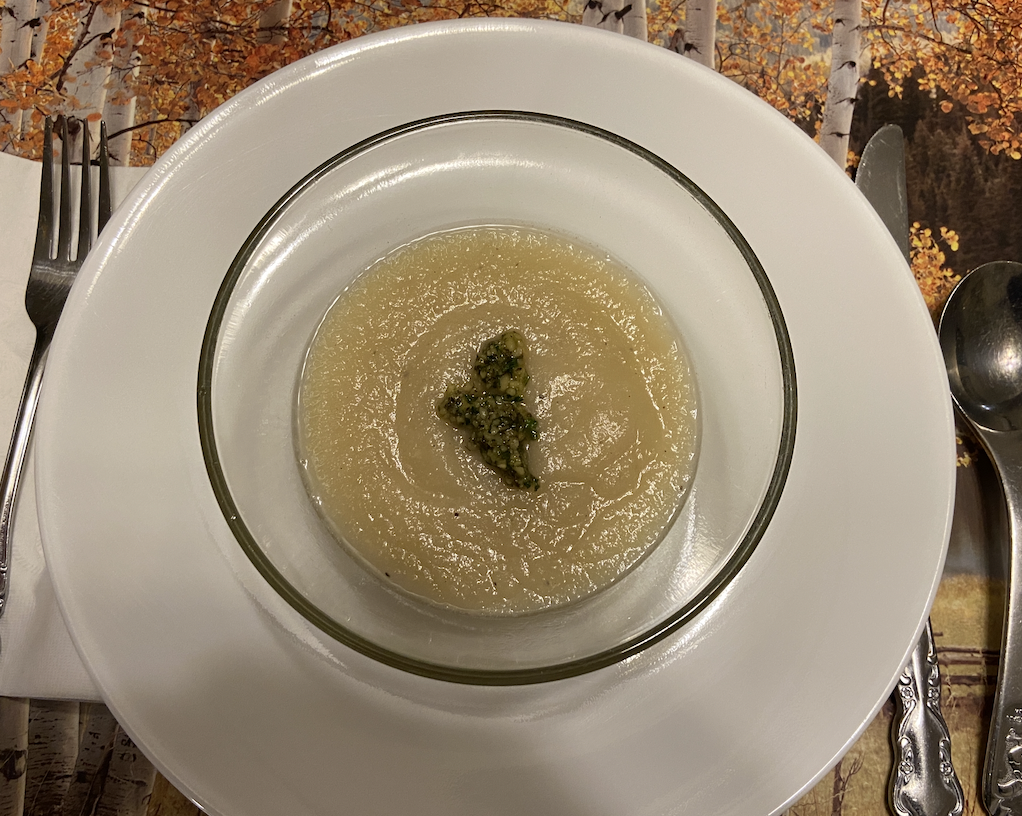
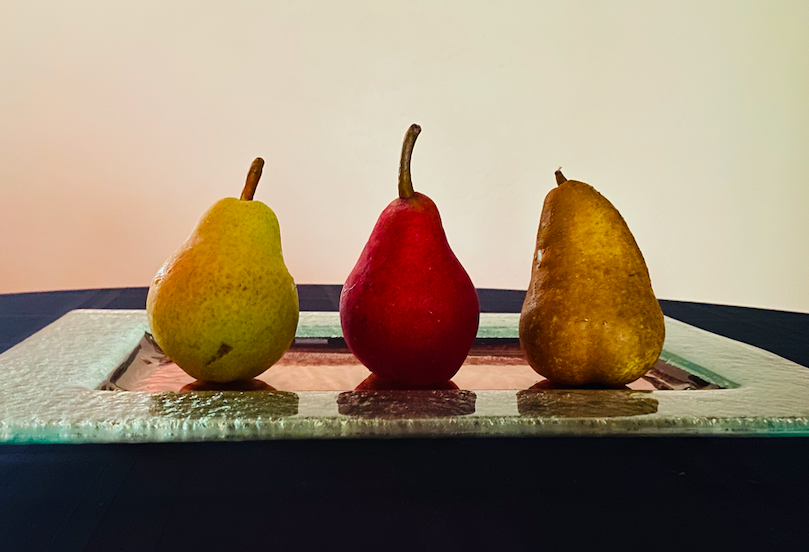
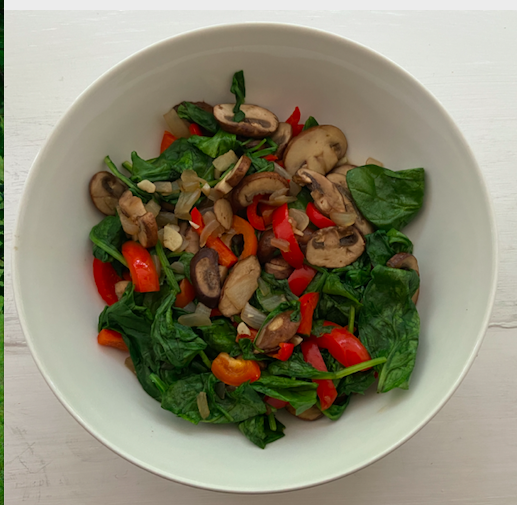
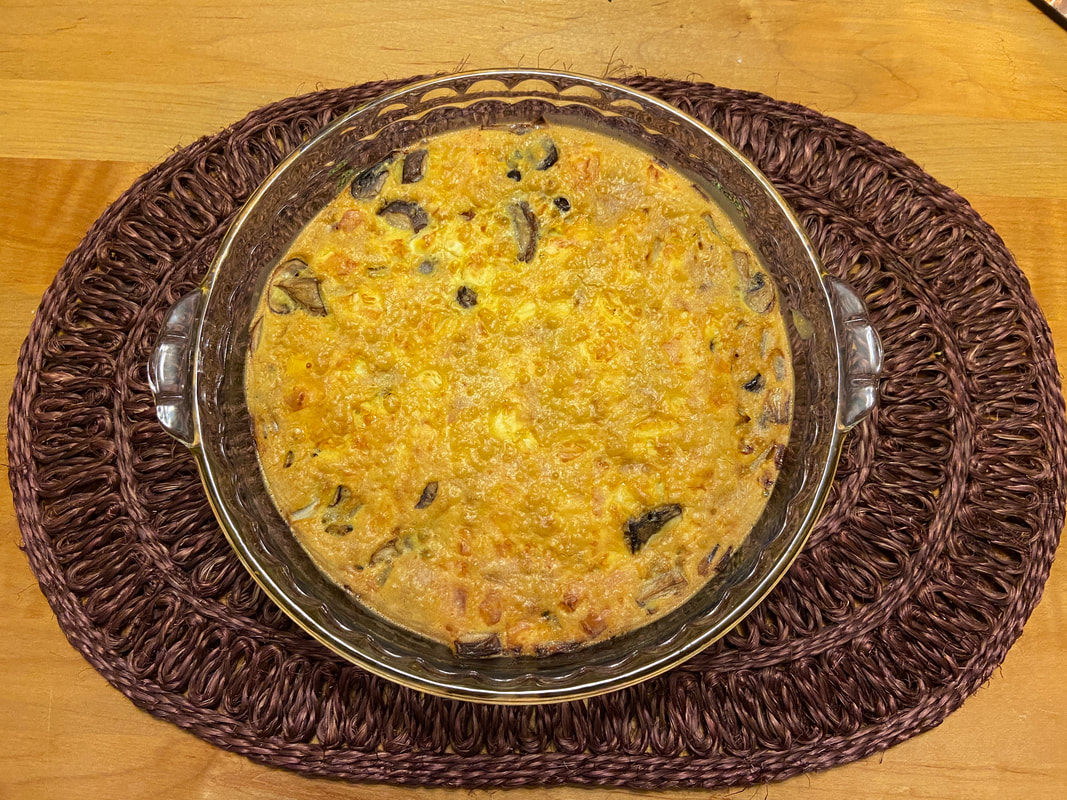
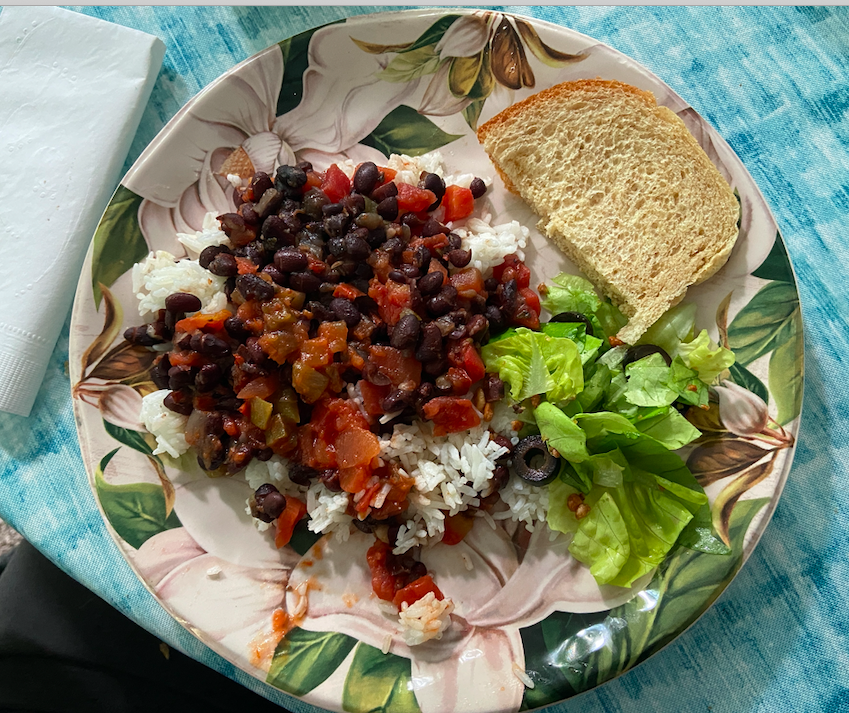




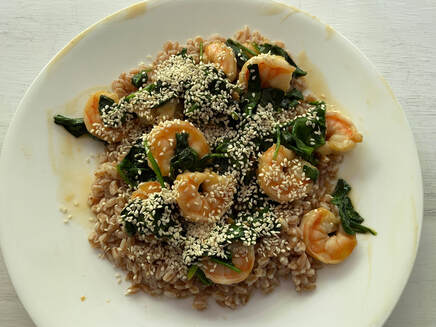
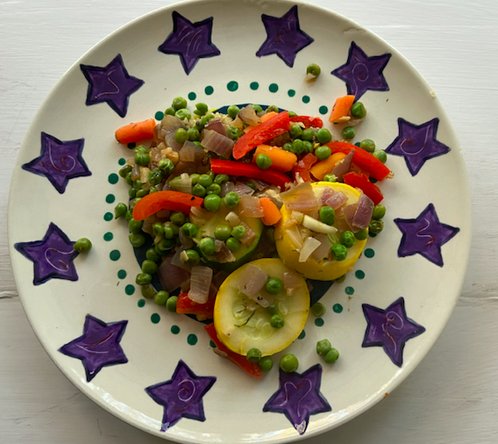
 RSS Feed
RSS Feed